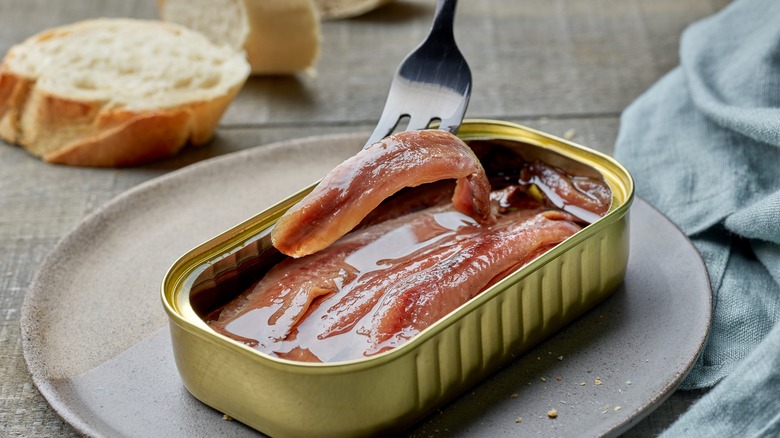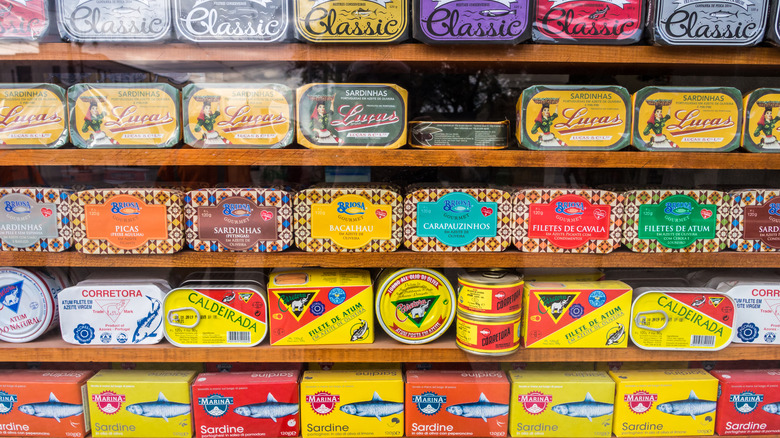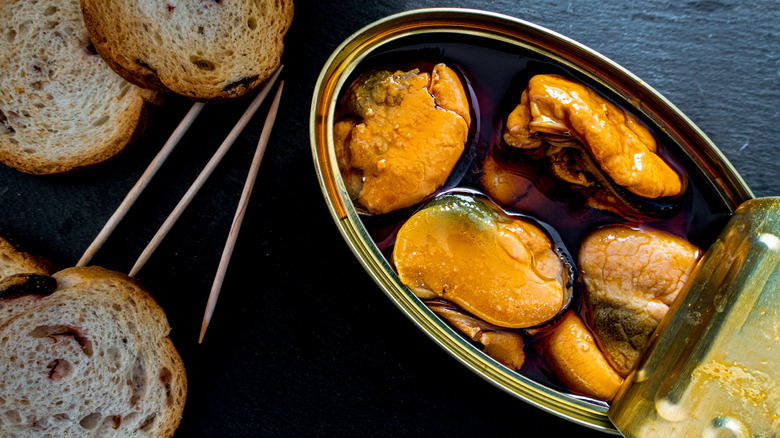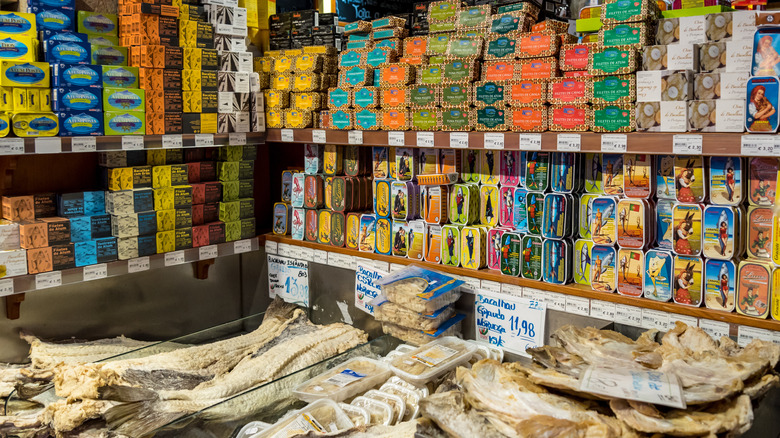The European Region That's Perfected Canned Seafood
Humankind has always been concerned with preserving food in order to keep it as fresh as possible. Whether to eat later, store during cold and barren winters, or carry on long journeys — necessity is the mother of invention.
History reports that in 1795, Napoleon Bonaparte was looking for a way to provide convenient, nutritious food to his troops as they waged endless wars far away from the comforts and conveniences of home. After an open call, a tidy sum of 12,000 francs was awarded to French chef Nicolas Appert, who was well-acquainted with preserving precious commodities. Appert understood that the same techniques used for preserving wine could be applied to food and set out to develop a system for packing meat in jars, sealing them with cork and wax, then submerging them in boiling water to set the seal and sterilize the meat. A few years later, an Englishman named Peter Durand developed sealed tin-lined metal containers and received a patent protecting his concept in 1810 (via BBC). It didn't take long for tin cans to become a popular preservation method, and once can openers were invented, many foods — including fish — could easily be kept in kitchens.
Canning to preserve food and tradition
Seafaring countries naturally developed thriving fishing industries. As with all agriculture or aquaculture, the seasonal nature of the food supply leads to periods of abundance and scarcity. In times of plentitude, people took and still take measures, like canning, freezing, dehydrating, pickling, curing, and fermenting, to extend nature's bounty.
In an era before electric refrigeration, freezing was an uncommon preservation technique in warmer months and climates (per National Center for Home Food Preservation). Salt curing, smoking, pickling, and dehydration are popular methods still used today for cod, salmon, herring, and other densely textured fish. The advent of canning opened up an entirely new method for preserving delicate seafood, bivalves, and tiny fish like sardines, anchovies, and smelt. BC Food History indicates that it wasn't until the 1920s, and the invention and ability to cook with a pressure cooker, that canning low acid foods like fish became a safe option, and it was quickly adopted by fishing enterprises in coastal countries.
Europeans are fiercely protective of their gastronomic traditions. Canning allowed culinary meccas like the Iberian and Italian peninsulas to preserve some of these delectable traditions. In Portugal and Spain, you will notice entire stores with shelves stacked to the brim with colorful tins of locally caught fish and shellfish.
Conservas from the Iberian peninsula
What makes Europe's western-most region, the Iberian peninsula, so unique when it comes to canned fish? At the time of the advent of canning, Spain and Portugal were relatively poor countries, yet both are richly steeped in incredibly textured and nuanced cuisine. La Tienda suggests that Spaniards, in particular, are devout gourmands, preferring the best quality fish and seafood available — and they know that the best is often canned. Such demand for high-quality culinary ingredients gave way to a prosperous conservas (canned fish) industry.
Chef and restauranteur Abel Álvarez explained to La Tienda, "The best conserva makers are canning fish caught literally the day before, why wouldn't you maintain the freshness of that fish as long as possible?" It's hard to disagree. As The Manual observes, this convenient freshness combined with rich flavor has chefs around the world dreaming up new recipes and food pairings.
Portuguese and Spanish conservas
In canneries across the globe, the catch of the day, whether it is anchovies, sardines, mackerel, tuna, octopus, shellfish, clams, oysters, or mussels, is quickly cleaned, processed, and steamed, smoked, or fried in some cases, before it is expertly packed in tins with salted water or olive oil to keep it fresh.
The Portuguese and Spanish consider conservas a delicacy and take canning to the next level by paying homage to their savory cuisine at the time of canning. La Tienda reveals that aside from selecting the best quality and freshest seafood for their conservas, Iberians focus on additional ingredients that can enhance the flavor and texture of the fish, including the juice, called liquido de cobertura. Each variety of fish has its own recipe to highlight its natural flavors.
You will find mussels bathed in vinegar brine infused with garlic, paprika, and bay leaf — natural preservatives and easy ways to make canned foods more flavorful. Hearty fishes like tuna, mackerel, and cod are soaked in tangy olive oil or salted water that has been spiced. Bivalves and shellfish are canned in briny water that resembles their natural habitat. Famous Portuguese sardines can be found packed in oil with lemon peel and herbs or in a spicy tomato sauce that emphasizes their salty taste. These differences set Iberian conservas apart from others, making them some of the most delicious in the world.



